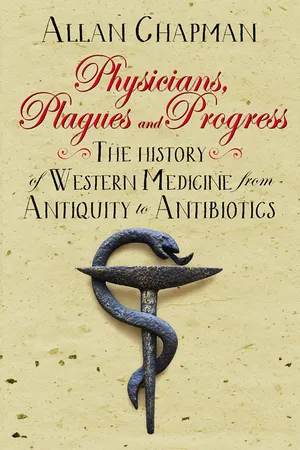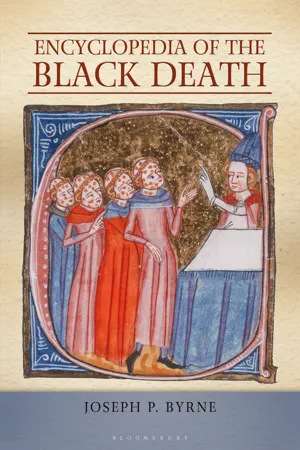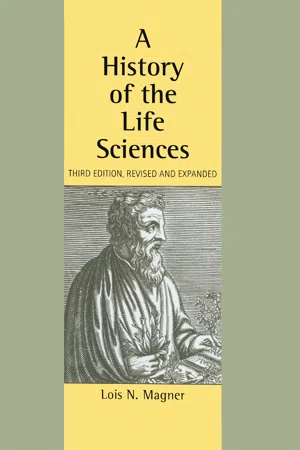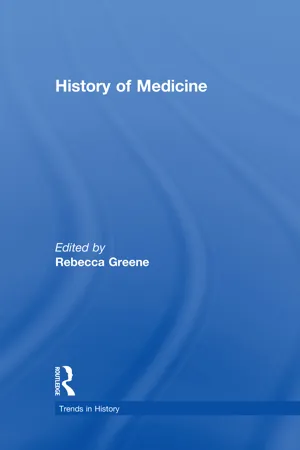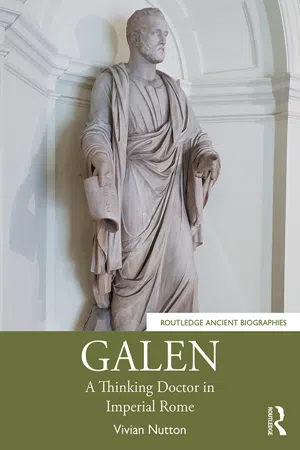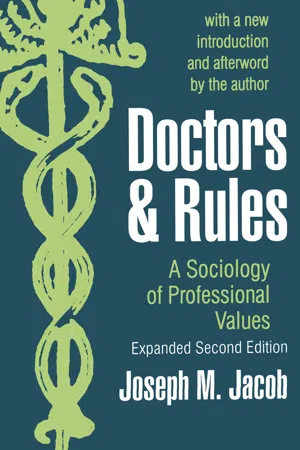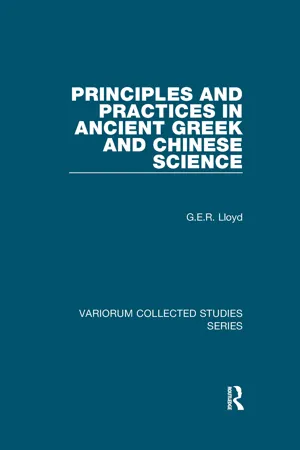History
Galen
Galen was a prominent Greek physician, surgeon, and philosopher in the Roman Empire during the 2nd century AD. He made significant contributions to the fields of anatomy, physiology, and medicine, and his writings greatly influenced medical practice for centuries. Galen's work emphasized the importance of empirical observation and experimentation, and his theories and teachings had a lasting impact on the development of Western medicine.
Written by Perlego with AI-assistance
Related key terms
Related key terms
1 of 4
Related key terms
1 of 3
8 Key excerpts on "Galen"
- eBook - ePub
Physicians, Plagues and Progress
The History of Western medicine from Antiquity to Antibiotics
- Allan Chapman(Author)
- 2016(Publication Date)
- Lion Books(Publisher)
Epigrams mention high-society female practitioners. Many of these women would have treated female patients for a variety of gynaecological ailments and children’s diseases. When one adds women and small children together, one has a total of more than half the Roman population: a major patient catchment. While some women may have been folk healers and empirics – as many male quacks were – there is sound surviving evidence of Greek and Roman women who practised rational or at least common-sense medicine and used the sound, scientific techniques of the age. Their professional daughters and granddaughters would continue doing so with remarkable success down the millennia, eventually phasing, by the late nineteenth century, into those European and American women who finally gained entrance to academic medical schools. We will meet them in later chapters.GALEN’S INFLUENCE : MEDICINE, ETHICS, RELIGION, AND TEACHING ACROSS FIFTEEN CENTURIESWhy were the teachings and practices of Galen so pervasive and long-lasting? After his settlement in Rome after AD 162, leaving the gladiators of Pergamum to the care of his successors, he rapidly won renown, as a medical practitioner, a brilliant teacher, and an anatomical lecturer. Galen became physician to the army, then to the imperial court, as well as doctor to the Emperor Marcus Aurelius and then his heir Commodus. His professional career, which began beside the bloody operating tables beneath the Pergamum arena, ended among the very highest echelons of Roman society.But what was it about both his writings and his personal example that made this rather flamboyant Greek so persistently appealing to later Roman doctors, to medieval Arabs during the “golden age” of their civilization from Spain to Persia, and to the professors of Bologna, Montpellier, and Paris in Europe’s new post-1150 universities, and would inspire a diversity of Renaissance Europeans and beyond – such as Vesalius and Harvey – to challenge his theories? While they may have found errors in Galen’s physiology, and corrected them, to lay the foundations of post-Renaissance Western medicine, no one could fail to stand in awe of Galen’s passion for exact taxonomy, lucid description, and the concept of method and technique he bequeathed to later ages.As did his master Hippocrates, Galen revered the Oath and respected the wider moral and ethical duty of the healer to his (or her) patient. Likewise, he revered Plato and Aristotle, for Galen always saw himself as a philosopher - eBook - ePub
- Joseph P. Byrne(Author)
- 2012(Publication Date)
- ABC-CLIO(Publisher)
Qanon . These largely Galenic works shaped Islamic medicine to the 18th century.One of the most influential thinkers to spring from the Roman Empire, Galen of Pergamum was a Greek physician whose writings formed the basis of the European medical canon down to the 19th century. (Courtesy of the National Library of Medicine)When the Christian West began absorbing Latin translations of Arabic medical works in the late 11th century, it was not only the authority of the ancients for which they were appreciated, but also the emphasis on the practitioner’s personal observations and experience. Nonetheless, the humoral paradigm reigned supreme, and its development in European universities peaked in the 1300s. As plague repeatedly savaged the Western world from 1347, medical scholars and practitioners (usually the same) reconciled Galen’s humoralism with epidemic-inducing miasmas and the astrological influence of celestial bodies. This only strengthened Galenism into the 16th century. Renaissance humanist scholarship and printing led to the replacement of derivative Arab works with Galenic and Hippocratic editions in their original Greek, beginning in 1500, which further strengthened the Galenic paradigm. Ironically, the Renaissance is known as much for its emphasis on one’s own experience and observation as for its reliance on the ancients. Galenism had atrophied as a model but was unassailable. Early proponents of contagion and germ theory had to treat with Galen, as did empirics, who eschewed any theory and claimed to rely entirely on experience. Paracelsus and his alternatives to humoral theory presented a challenge, especially in Protestant countries, but in 1600, the University of Paris medical faculty rededicated itself to Galenism. They also took 30 years to accept Harvey’s circulation of the blood. Despite the discoveries of the Scientific Revolution, there was no medical equivalent of the Copernican Revolution before the end of the Second Pandemic. - Lois N. Magner(Author)
- 2002(Publication Date)
- CRC Press(Publisher)
n Medicine provides a valuable survey of the medical knowledge and practices of first-century Rome, but Celsus and all the medical writers of antiquity, with the exception of Hippocrates, have been overshadowed by the great physician, anatomist, philosopher, and writer, Galen of Pergamum (130 to ca. 210). According to some biographers, after a long and active life Galen died in Rome in 217, at the advanced age of 87.Galen’s writings were abstracted, rewritten, reorganized, and transmitted to medieval and Renaissance scholars in the form known as Galenism. As a medical authority, Galen was second only to Hippocrates; as anatomist and experimental physiologist, he had no rivals. Called the “First of Physicians and Philosophers” by the emperor Marcus Aurelius, Galen was referred to as “wind-bag” and “mulehead” by his critics and rivals. Galen wrote more than 300 treatises on subjects that included philosophy, religion, ethics, mathematics, grammar, law, anatomy, physiology, pathology, dietetics, hygiene, therapeutics, pharmacy, commentaries on Hippocrates, and autobiography. The only complete modern edition of his surviving works fills 20 large volumes; this German edition is said to have taken 12 years to complete and almost as long to read.Fearing that his writings were being corrupted by careless copyists and that mediocre authors were trying to pass off their work as his, Galen composed a guide to the cautious reader called On His Own Books, which provided a list of the titles of his books, a description of his genuine works, and a reading program for aspiring physicians. He urged medical students and teachers to foster the love of truth in the young. This would inspire them to master the writings of the Ancients and devise ways to test and prove such knowledge. Medical practitioners, according to Galen, should maintain a scientific approach to anatomy, physiology, the nature of disease, and the nature of human beings. Galen portrayed himself as a scholar who understood that, despite his life-long search for truth, he would never be able to discover all that he so passionately wished to know.Galen was born in Pergamum, in Asia Minor near the Aegean coast opposite the island of Lesbos. The city boasted a library and temple of Asclepius, the Greek god of medicine, and saw itself as a cultural rival of Alexandria. The Ptolemies tried to arrest the intellectual growth of Pergamum by forbidding the export of papyrus. In response to this threat, parchment was developed and the book as we now know it replaced the papyrus roll. Pergamum was also known as the site of intense Christian evangelism, and Galen did not fail to comment on the conflicts between pagans, Jews, and Christians.- eBook - ePub
- Rebecca Greene(Author)
- 2013(Publication Date)
- Routledge(Publisher)
11–12, 1985, 123–134) and “Galen on Roman Amateur Athletics” (Arete: Journal of Sport Literature, II, 1985, 171–176). Finally, in concluding a survey of important scholarship on Galen, one must cite Owsei Temkin's masterful Galenism (Ithaca, New York, 1973), which stands as the finest modern account of Galen's life and enormously long-lived influence on Western medicine. Temkin sifts the conflicting claims by later Galenists to determine how and why this particular Roman physician should have given the models (along with the semilegendary figure of Hippocrates, canonized securely by Galen) for medical thought and practice, models which would retain importance well into the 19th century. Much as Romans received an image of Hippocrates through Galen's eye and mind, so too was Galen filtered through the synthetic genius of Byzantine and Arabic physicians and philologists. ROMAN MEDICINE: EDITED TEXTS AND TRANSLATIONS Looming over Roman medicine is the huge bulk of writings under the name of Galen, and in spite of its many corruptions, the early 19th-century edition of Galen's works, edited by C. G. Kühn, Claudii Galeni Opera omnia (Leipzig, 1821–1833; 20 vols. in 22 parts; rptd. Hildesheim, 1964–1965), remains the most complete collection of Greek texts, accompanied by often-unreliable Latin translations. Happily, current scholarship on Roman medicine includes a number of freshly edited and translated tracts by Galen, each completely superseding its Kühn counterpart, and two have appeared in the Corpus Medicorum Graecorum (CMG) series. The following can now be added to the listings given in Leitner, Ancient Medical Authors, and represent the flurry of activity by skilled philologists and medical historians seeking better understanding of Galen's works, an activity especially notable since the mid-1970s - eBook - ePub
Galen
A Thinking Doctor in Imperial Rome
- Vivian Nutton(Author)
- 2020(Publication Date)
- Routledge(Publisher)
2 Galen the RomanMedicine in Rome
Why Galen decided to leave Pergamum and make his way to Rome is a matter for speculation, but for a man of such talent and ambition, as well as independent means, it was hardly surprising. Rome was now a bi-lingual city where, in Galen’s own words, the population of a single block far outstripped that of any town where Hippocrates had lived.1 The “epitome of the whole world”, a description borrowed by Galen from a famous sophist from Asia Minor, had long attracted immigrants from all over the Greek world, from millionaires and regional dynasts eager to make their mark in the politics of empire to humble tradesmen and those who simply sought a better life than that of an Anatolian peasant.2 Those who offered healing had been prominent among them for centuries, for it was no wonder that in such a mega-city illness should be common. Pliny the Elder, writing around 70 CE, had begun the section on medicine in his Natural History with a celebrated polemic against the “filthy Greeks” who had introduced the practice of medicine into Rome, undermining Roman self-reliance and contributing to the debilitating growth of luxury. He drew on many lurid examples of greedy and lascivious Greek doctors who cheated their patients and even got away with murder, citing Cato the Elder’s warning to his son two hundred and fifty years earlier against putting his faith in doctors like this. Pliny’s splendid rhetoric replicated in prose many of the jibes directed against doctors by composers of epigrams in both Greek and Latin, several of them written and circulating in Rome.3 - eBook - ePub
Doctors and Rules
A Sociology of Professional Values
- Joseph M. Jacob(Author)
- 2018(Publication Date)
- Routledge(Publisher)
4 The profession of medicine: Some more history Earlier, I asserted the modern legacy of the Hippocratic tradition. Hippocrates himself lived in the fifth century BC in the so-called Golden Age of Greece. The tradition is linked to our age in a variety of ways. Since the paterfamilias was responsible for health care, the Roman view, for example as advanced by the elder Pliny, was that 1 there was ‘no need of physicians’. As Daremberg remarked 2 they were ‘sans medecins, mais non pas sans medecine’. Certainly, the Romans knew of legal actions for medical expenses, 3 and hence we may presume of medical men’s fees. Despite Pliny there were those kept Greek medical learning alive in that more prosaic regime. To us the most important of these was Galen (AD 131–201) whose influence, as we shall see, continued to beyond the Renaissance and Dioscorides whose description of herbs was to puzzle that age. 4 For a millennium neither Rome nor Christianity was prepared to adopt ideas of experimental science, nevertheless the prescriptions if not the methods of Galen took hold. And it was his writings, with their links to Hippocrates, that were used (and glossed) in Arabia and in Europe in the Middle Ages, in monastic medicine, and in the later part of that time in universities in Italy and France. 5 Of particular significance was the group which settled at Salerno in around AD 900. 6 For reasons not (yet) understood, the Salerno School became both international and inter-denominational. Its heyday was the eleventh and twelfth centuries. The School practised both physic and surgery. It was a teaching school and it was the first to confer doctorates on medical men - G.E.R. Lloyd(Author)
- 2023(Publication Date)
- Routledge(Publisher)
our perception of Greek medicine itself. The first is the story of the superseding of ancient medicine: Hippocrates, Galen, and the rest can now be pensioned off. But I am more interested in the positive aspects of the second transformation— which, so far from pensioning off the ancient authors, has opened up new perspectives on their work. This work is now seen as (among other things) important evidence relating to competing ideas of the nature of medicine itself, and how its right, if it had a right, to be called a science, or craft, or branch of knowledge came to be legitimated. If this second transformation may subtract from a certain mystificatory glamour attached to the aura of ancient names, it replaces it with a greater appreciation of the real-life difficulties and dilemmas that ancient medical practitioners themselves had to face.The simple fact of the matter is that when Greek medicine was held up either as the best medicine there was, or at least as the basis for all that was best in medicine, that introduced massive and systematic distortions in the perception of what that medicine was like. The processes of selection and distortion had already begun, of course, in late antiquity itself—with Galen’s interpretations of the theories and practices he chose to ascribe to Hippocrates.4 And Galen’s picture of Hippocrates was as influential as the rest of Galen’s ideas were (including even, I have to add, Galen’s ideas on Galen himself: it is only comparatively recently that sustained attempts have begun to be made to treat sufficiently critically the picture that Galen gives us of himself). But the image of Greek medicine that scholars and doctors alike lived with during those long centuries of its great influence was at best a partial one—partial in the sense of incomplete, and partial in the sense of biased—for it elided much and it certainly reinterpreted very heavily what it did not elide. The heroic figures of the past, Hippocrates himself especially, were not just role models: as the vehicles of medical education they had to be reconstructed in the light of what passed as the best in medical practice.4. See my "Galen on Hellenistics and Hippocrateans," in Methods and Problems in Greek Science (Cambridge, England: Cambridge University Press, 1991), chap. 17, with references to the extensive earlier literature, notably Georg Harig and Jutta Kollesch, "Galen und Hippokrates," in La Collection hippocratique et son rôle dans l'histoire de la médecine: Colloque de Strasbourg 23-27 October 1972, ed. Louis Bourgey and Jacques Jouanna (Leiden: E. J. Brill, 1975), pp. 257-74; Wesley D. Smith, The Hippocratic Tradition- eBook - ePub
- Faith Wallis, Robert Wisnovsky(Authors)
- 2016(Publication Date)
- De Gruyter(Publisher)
88 In what follows, I will present the modern narrative explaining the dominance of Galenic medicine in the Muslim world. Next, I will suggest a reconsideration of some of the assumptions of this narrative. Finally, I will propose some possible alternative explanations for this dominance.2The Modern Narrative: The Transmission of Medicine and the Dominance of Galenism
The narrative currently favoured by modern scholars presents medicine in Islam as based on the four humours theory and the Greek-Galenic medicinal system.89 These reached Muslim scholars through a process of translation sponsored by various members of Islamic society including, perhaps even primarily, Nestorian-Christian physicians. These physicians were both practitioners and patrons of translations of Greek and Syriac texts into Arabic. Nonetheless, according to Savage-Smith and Pormann, Greek medicine was not the only system available. In early periods, i.e., the eighth to ninth centuries, other practices such as folk medicine, Persian, Indian, and Chinese medicine were in some use. However, due to the availability and dominance of Christian physicians following Galenic medicine, these other systems never generated enough support among courtiers (as either patrons or clients), while Galenism continued to grow stronger. As a consequence, medicine in medieval Islam is basically Galenic medicine. Though some remedies can be traced to different sources, still the great mass of concepts and remedies are Galenic.90The dominance of Galenism in Islamic medicine has been explained by other factors as well. Dols argues that “The predominance of the Greek tradition was largely due to the Hellenized Christians, Jews, and Persians, who made up the bulk of the population in the newly established [Ummayad] empire and to the persistence of their centers of learning.”91 Hence, according to Dols, the preference and adherence to Galenism was not restricted to the elite or court circles only, but included the population at large. Galenic physicians were the healthcare providers of the regions before and after the Muslim conquest.92
Index pages curate the most relevant extracts from our library of academic textbooks. They’ve been created using an in-house natural language model (NLM), each adding context and meaning to key research topics.
Explore more topic indexes
Explore more topic indexes
1 of 6
Explore more topic indexes
1 of 4
